You don't need to be a master gardener or buy any fancy contraptions to start an herb garden on your kitchen counter. Not only are they beautiful and aromatic, they can save you SO MUCH MONEY on storebought herbs for recipes. We'll share the benefits of an herb garden, how to get started, ideas for using your herbs, and some other simple beginner tips!
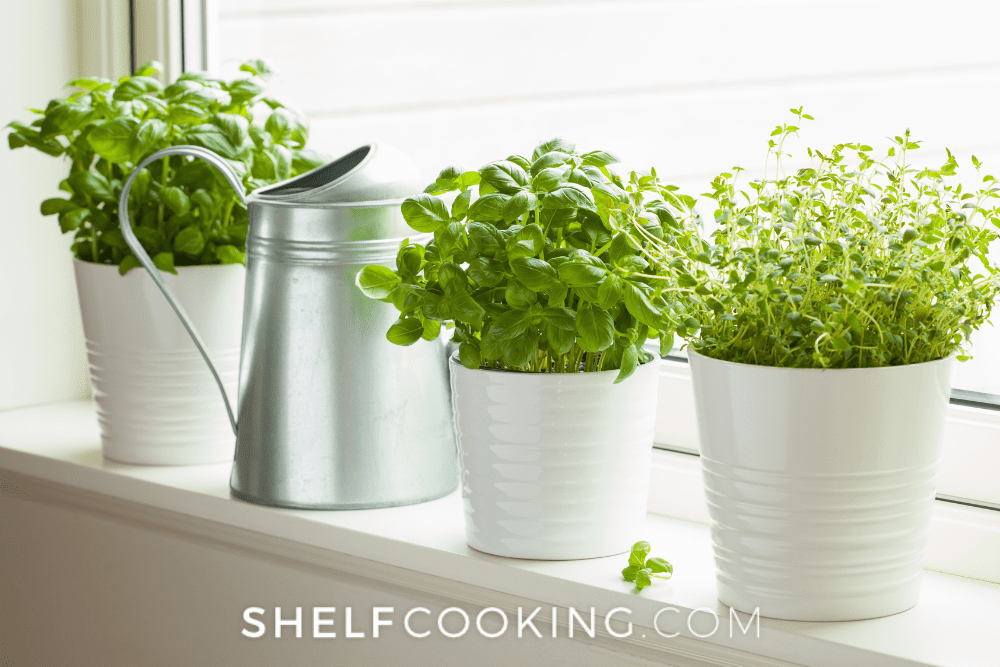
*Note: When you click the links in this post, we may receive a commission at no extra cost to you.
BENEFITS TO STARTING YOUR OWN COUNTERTOP HERB GARDEN
–ANYONE can succeed! An herb garden is relatively simple to start and maintain and takes up very little space! It can sit in your kitchen window, adding a pop of color and life to the room. Plus they smell fresh and fragrant next to that sink of dirty dishes!
–So much more affordable than storebought herbs! Storebought herbs like basil and thyme can be quite expensive per package, especially for the limited quantity. A sustainable stock at your fingertips will pay for itself over and over again, ultimately saving you money and providing an abundance of flavor and garnish to your dishes.
–Non-toxic & Healthy Ingredients! You can guarantee that your herbs are free from pesticides and harsh chemicals. Growing plants, no matter how little (but mighty!) can be a relaxing hobby, bringing some calm in a sometimes chaotic kitchen!
–Nutrient-boosting garnishes elevate any dish! Herbs are loaded with fat-free nutrients, antioxidants, cancer-fighting elements, and tons of flavor. Incorporating them regularly into your meals or as garnish on your drinks is an easy way to boost their health factor!
WHAT DO I NEED TO START MY OWN COUNTERTOP HERB GARDEN?
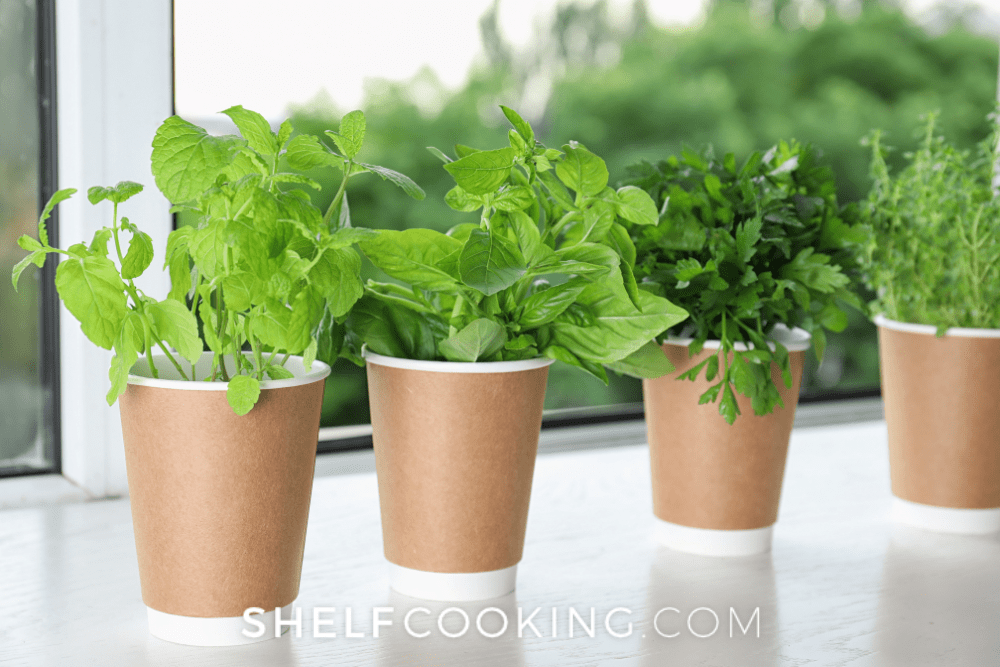
Luckily the startup cost is minimal!
Herbs aren't too picky about their environment, so you can find cute little pots at the dollar store or you can even repurpose your morning disposable coffee cup.
You have two options for the plants themselves: start from seeds or transplant an existing plant. Seeds are sold all over! You can pick them out at a lawn and garden store OR at your grocery store! They are also sold at specialty stores online and sometimes local libraries even offer seed packets in the spring.
Here's what you need to start:
- A window sill
- Small pots or repurposed containers with a drainage hole
- Herb seed packets OR pre-started herb plants
- Small amount of soil
A couple of items that aren't necessary but nice-to-haves:
- A spray bottle for watering
- Plant labels – they sell cute ones on Amazon or Etsy, but some masking tape and a sharpie work just as well!
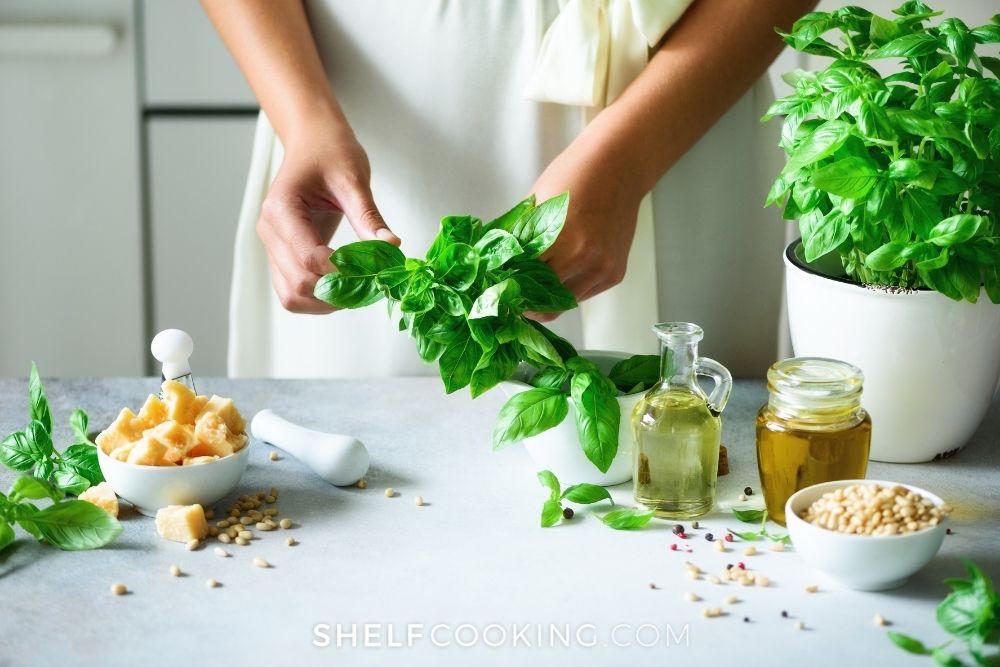
Some most common herbs that you might consider starting with:
- Basil
- Cilantro
- Chives
- Dill
- Parsley
- Rosemary
- Thyme
STARTING AND CARING FOR YOUR HERB GARDEN
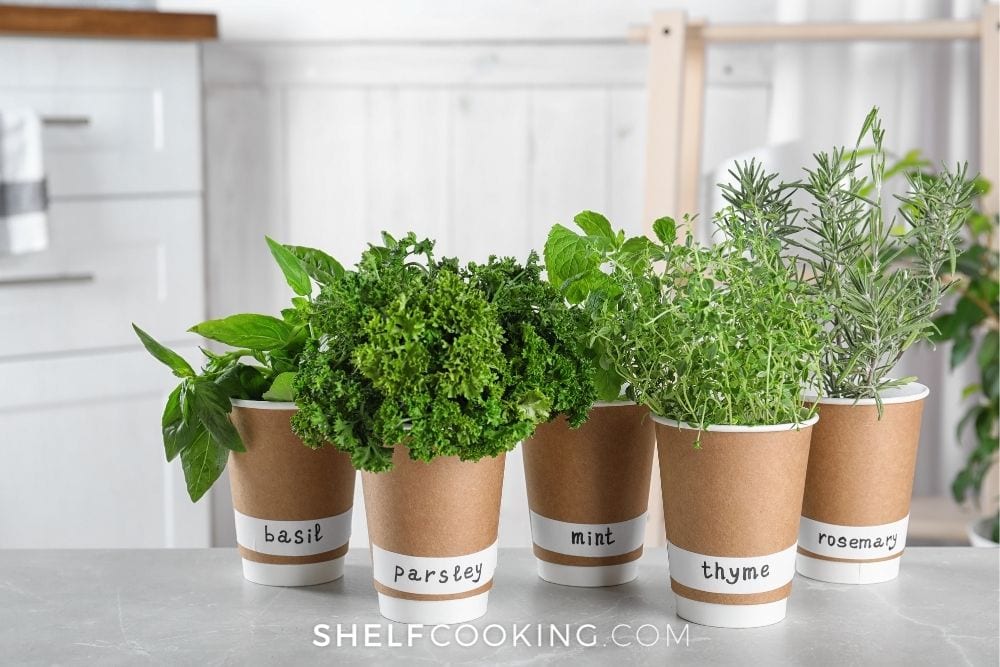
Let's get to it! You've assembled all the products you need and you picked out which herbs your family will enjoy the most.
1.) Get your pots or containers and ensure that there is a hole on the bottom for water drainage. Herb plants do not like to sit in still water. This means you'll need some kind of lid or tray under the containers to collect the water drainage.
2.) Fill eat pot with soil. Since the pots will likely be very small, this might only be a few spoonfuls.
3.) Deposit your seeds into each pot. The seed packets will have instructions for how deep and how far apart to place them in the soil.
*Don't forget to label each pot so you remember which herb is which!
4.) Dampen with some water. A spray bottle works perfectly to moisten the soil without oversaturating it!
5.) Cover the pots with plastic wrap to keep the moisture in. You'll remove the plastic wrap once the seeds start to sprout above the soil.
There you go! You are officially a gardener!
Once your herbs are growing leaves, they require minimal care. Water when the soil seems dry; they typically just need to be misted a couple of times per week.
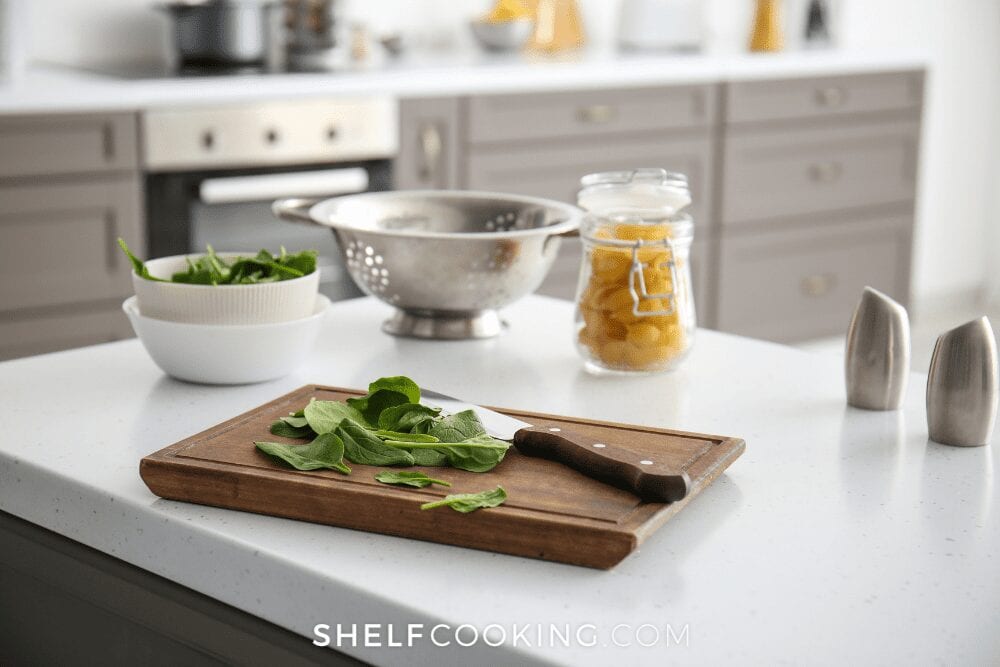
Do your herbs look hearty enough to add to a recipe? Then go for it! Herb leaves can be cut at any point. If you chop the leaves off of the top, then they will continue to regrow from that spot. Cutting the leaves off of your herbs does not hurt them, but actually encourages them to continue growing!
If you find yourself with more herbs than you know what to do with, gift them to a neighbor or read this full post on how to store fresh herbs and extend their shelf life!
WAYS TO USE YOUR FRESH HERBS
Mmmmmm there is nothing like the smell of fresh rosemary or basil. Once your countertop herb garden is thriving, here are some fun ways to utilize them!
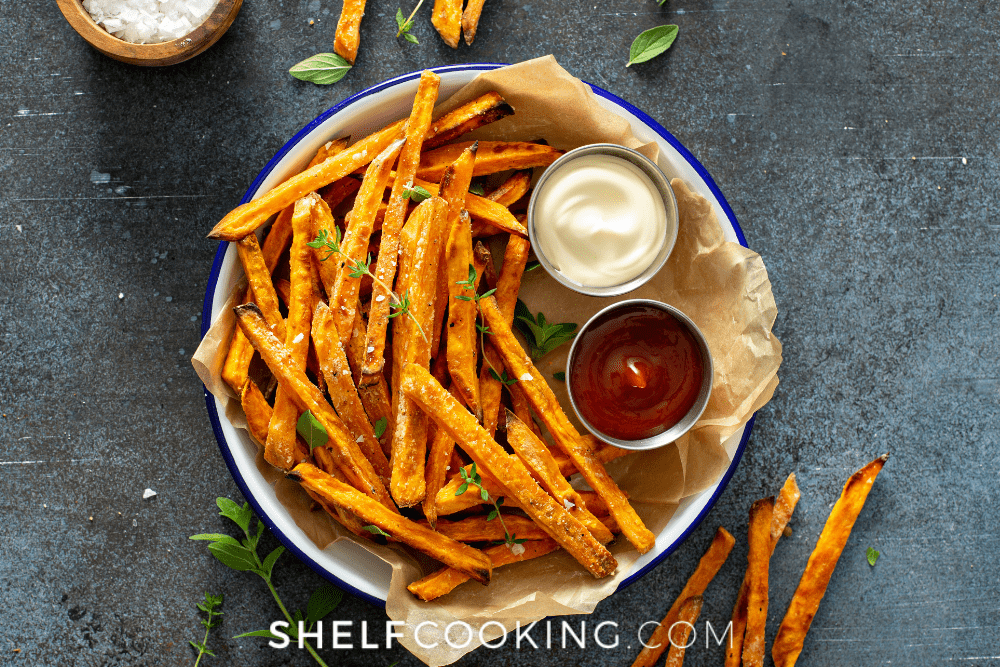
- The obvious answer is adding pizzazz to any recipe as a beautiful garnish. We love adding chopped cilantro or parsley to any entree, giving that extra pop of green color and elevating the plate!
- Use cilantro in a homemade salsa for a potluck or party.
- Add fresh basil to a homemade pizza or flatbread.
- Top pasta bowls with chopped parsley.
- Blend up a batch of your own homemade pesto sauce or chimichurri sauce.
- Stick a stem of lavendar, thyme or rosemary in a glass of sparkling water or lemonade.
- Incorporate a variety of spices in a lemony herb chicken recipe or over a batch of roasted potato wedges.

How do you like to incorporate fresh herbs into your meals? Share your ideas below!
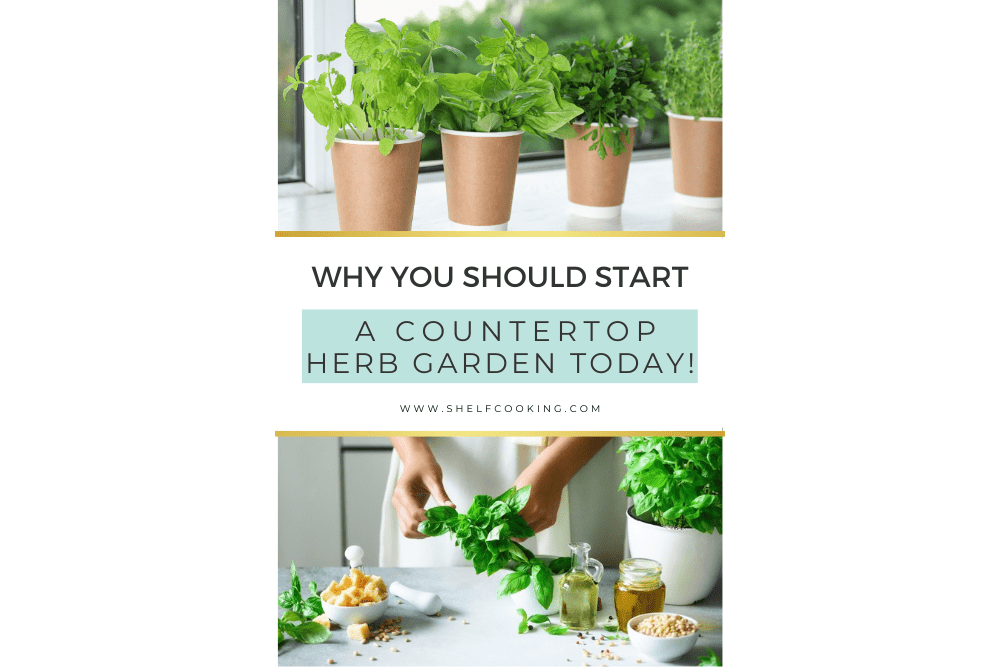
If you're looking for more fun kitchen hacks or recipe ideas:
- Have you tried making a batch of addicting homemade pickles?
- How to make freezer jam your family will LOVE!
- Here's some ideas for getting the whole family involved in meal prepping together.
Happy Gardening!
